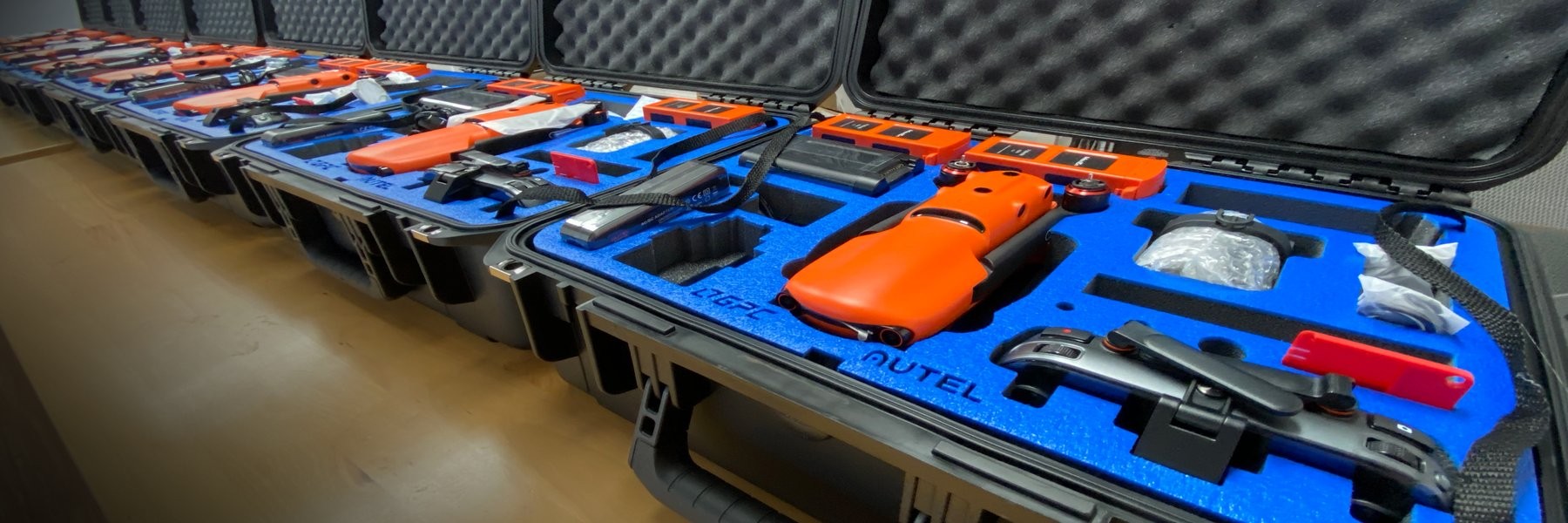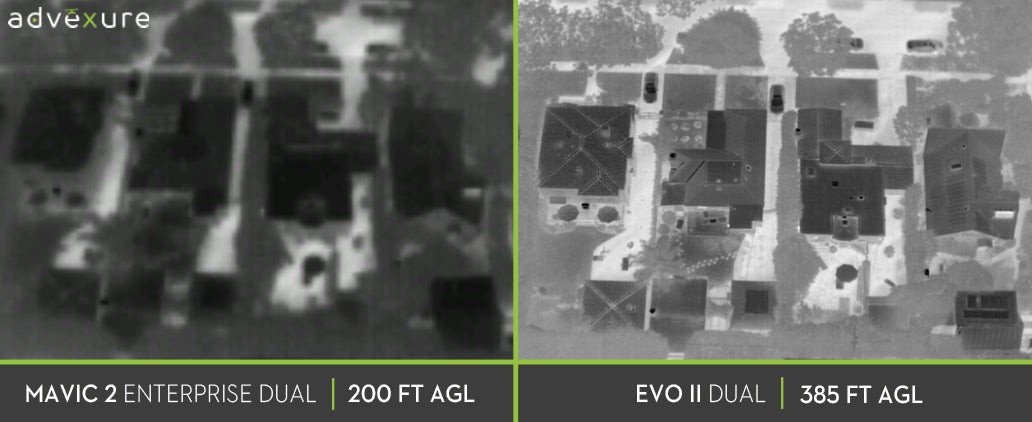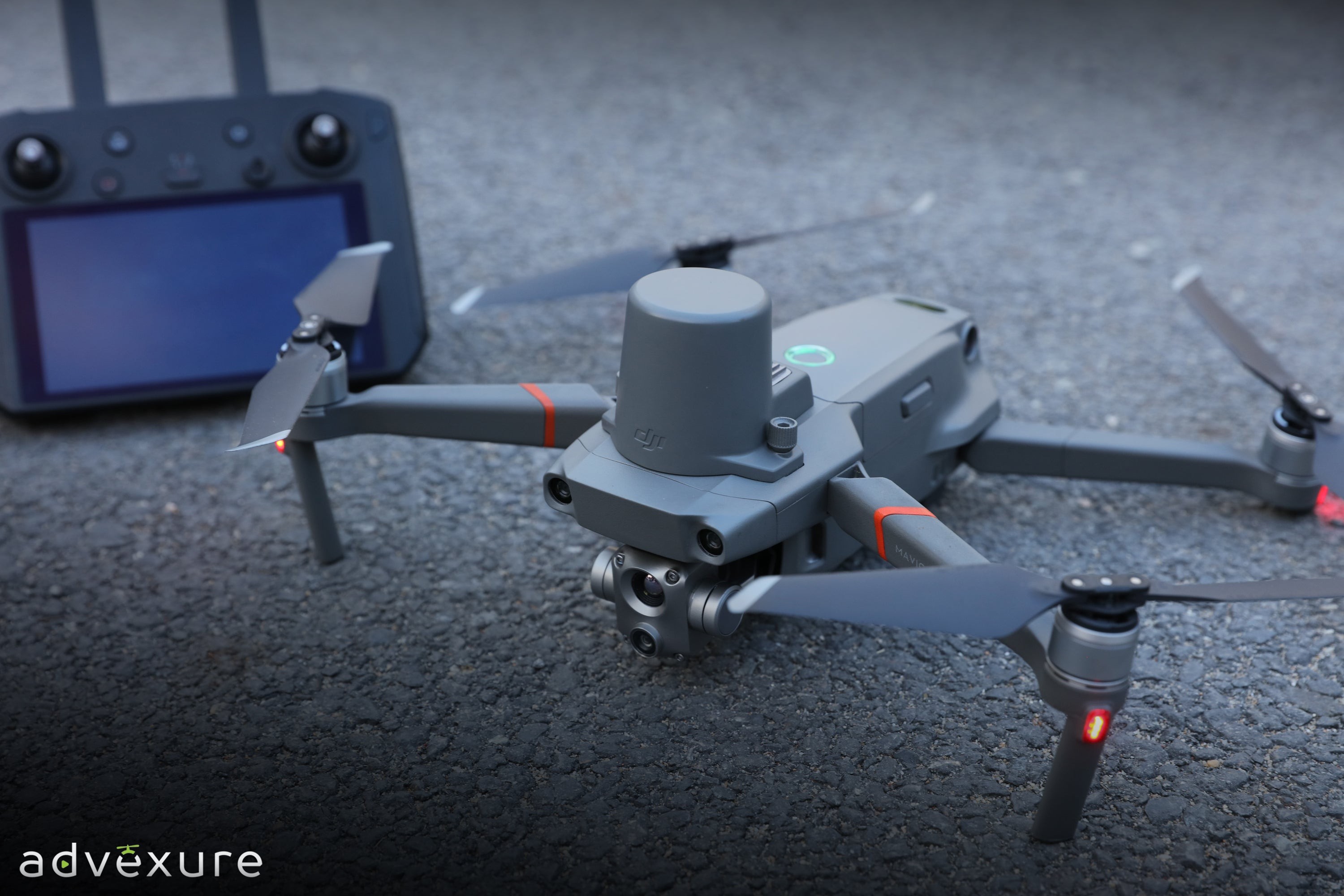The drone market offers a wide array of choices for various applications. For those seeking a powerful drone equipped with both thermal and visual cameras, the Autel EVO II Dual and the DJI Mavic 2 Enterprise Advanced often top the list. This article provides a comprehensive comparison of these two leading contenders, highlighting their key features, advantages, and disadvantages to help you make an informed decision.
 Autel EVO II Dual
Autel EVO II Dual
Camera Capabilities: A Core Difference
The most significant distinction between the EVO II Dual and the Mavic 2 Enterprise Advanced lies in their camera systems. The EVO II Dual boasts a high-resolution FLIR Boson 640 thermal camera paired with a 48MP visual camera. The Mavic 2 Enterprise Advanced also features a 640×512 thermal camera and a 48MP visual camera. While both offer impressive resolution, the EVO II Dual leverages the renowned FLIR Boson thermal core, known for its exceptional image quality and sensitivity. The difference in thermal resolution between a 640 and a 160 sensor is substantial, providing significantly more detail in thermal images.
 Thermal Image Comparison
Thermal Image Comparison
Flight Performance and Features
Beyond cameras, several other factors differentiate these drones. The EVO II Dual generally offers longer flight times, around 32-34 minutes per battery, compared to the Mavic 2 Enterprise Advanced’s 26-30 minutes.
Autel champions an open approach with no geofencing restrictions, allowing operators greater flexibility in flight planning. In contrast, DJI implements geofencing through its FlySafe system, requiring unlocks for restricted areas.
DJI’s Mavic 2 Enterprise Advanced integrates seamlessly with its ecosystem, offering features like add-on modules for specialized tasks (e.g., spotlights, speakers) and RTK compatibility for centimeter-level positioning accuracy. The Advanced also utilizes DJI’s renowned OcuSync 2 transmission system, known for its stability and range.
 DJI Mavic 2 Enterprise Advanced
DJI Mavic 2 Enterprise Advanced
Origin and Ecosystem
A key consideration for some users is the origin of the drones. The Autel EVO II Dual is assembled in the USA with foreign and domestic components, while DJI is a Chinese company. This can be a deciding factor for government agencies or organizations with specific sourcing requirements. Furthermore, the EVO II Dual features a modular camera system, allowing for future upgrades and interchangeability with other payloads. The Mavic 2 Enterprise series lacks this modularity.
DJI benefits from a mature ecosystem, including the versatile Smart Controller, cross-fleet compatibility with batteries and accessories, and self-heating batteries for cold weather operation. Autel currently does not offer a dedicated smart controller for the EVO II series.
Pricing and Availability
The Autel EVO II Dual typically comes at a higher price point than the DJI Mavic 2 Enterprise Advanced. However, the EVO II Dual often includes a comprehensive kit with multiple batteries, charging accessories, and a carrying case. Availability can vary, but Autel generally maintains a good stock of EVO II Dual units.
Conclusion: Choosing the Right Drone
The best drone for you depends on your specific needs and priorities. The Autel EVO II Dual excels in flight time, open source nature, Made in the USA advantage, and its modular camera system. The DJI Mavic 2 Enterprise Advanced shines with its integrated ecosystem, add-on modules, RTK compatibility, superior transmission system, and potentially lower price point. Carefully consider these factors to determine which drone best aligns with your requirements. Both are powerful tools capable of capturing high-quality data for a range of professional applications.
